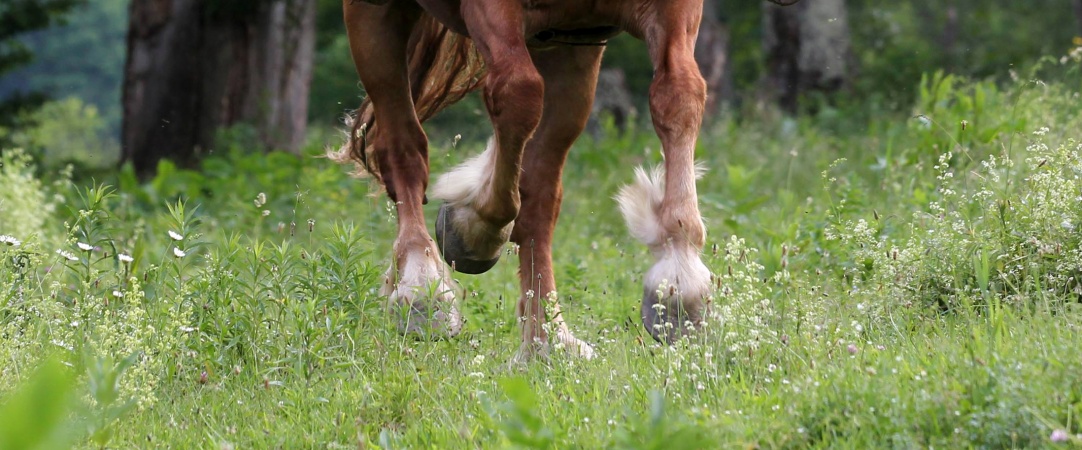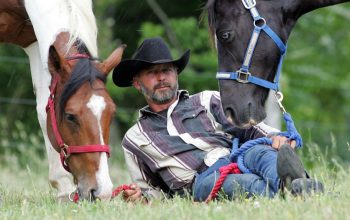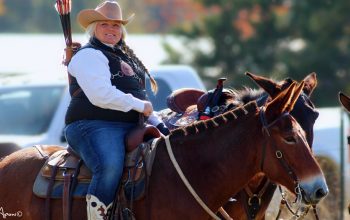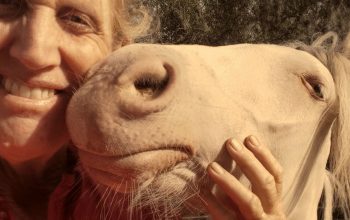by Jeff Wilson
This is the jingling spur. This the jingling spur that sits on the boot. This is the jingling spur that sits on the boot that follows your leg. This is the jingling spur that sits on the boot that follows your leg that touches your horse. This is the jingling spur that sits on the boot that follows your leg that touches the horse that moves the hoof. Wait! Is your horse really moving?
I’m sorry to tell you this, but few horses really move off the leg. I sometimes see a lot of leg activity from riders, but my comment to them is, “You’re workin’ harder than your horse.”
If attempting to pull the horse forward from the ground (last month’s beller) is a hangin’ offense, your picture hangs in the post office this month if your horse doesn’t readily move off your leg. How did this heinous crime of horsemanship find you? It’s time to put your guns in the ground, Mama.

…And let’s go back to a beginning to design a fresh start. If you care to notice your horse as you ride, you will observe that their body position, or frame, mirrors the physical effort the horse is involved in. Be aware of this business because it is important to recognize what the horse is giving you so you do not hinder their natural movement. For instance, as a horse travels through snow, or high grass, he uses his legs more dramatically in movement than he would have if ridden indoors. If any of you ride in such terrain you know what I mean. A trot through the snow or weeds conjures so much thrust from behind, and so much lift to it, it brings the experience of passage.
Your horse’s head and neck should mirror the unlocked frame of his body as the strides open and move forward through the gaits. The neck is no longer tight and upright like it wants to be at the beginning of the ride, but now the neck’s underside is flexed and forward with a nice open throat. Would you be clutching them reins right now, or loosening your fingers like a piano player?
A horse moving without elasticity or range of motion will reflect throughout the body. The hinds will either be carried out behind, escaped sideways, or they will lack impulsion. The back will remain hollow and rigid, and the head and neck will be carried stuck in a position either braced against, above, or below the bit. The horse is stiff. Suppling exercises are the key to transform these troubles and struggles.
Horses deserve to be able to be ridden with the highest degree of knowledge they can be given. I really enjoy helping horses be able to become more comfortable and successful as riding horses. Horse biomechanics are as old as horsemanship itself.
One of the simplest ways to get you thinking outside of the box is to teach you how to activate the horse’s hindquarters—activating each hind leg of the horse at a time. This simple exercise has absolutely nothing to do with a rider’s hands, or how the reins are used. It has nothing to do with the “headset” of the horse, and it does nothing to cause the horse to worry. That is the beauty of it.
Focus on the other end of the horse, the hinds, and forget about what is happening in front of you. The stone cold, hand-slappin’ truth of the matter is that what the front of the horse looks like as a shape is merely a reflection of what is being created behind you in the hinds of the horse.

The exercise I use starts with teaching the horse to step up underneath its body. The goal is to bring to the horse (and rider) a clearer definition of “forward.” This activation results in a more forward stepping (reaching) hind leg, and brings a beautiful resonation from the hind feet, through the spine, to the head of the horse. Riders need this experience to catch on to what riding can really become. With many horses trained to compress their natural gaits, or brace against the hand of the rider, this exercise will work those faults out by suppling a horse over its back and opening up the natural frame of the horse and ushering in the key component of looseness.
The novice horse to this concept is the lazy horse and the tense horse. Both are either braced against (above) the bit or behind it. Both are behind your leg, and have a short, stiff stride. The hind legs are out behind the body and are not engaged. Because these horses are heavy on the forehand, they are out of balance.
Next time you are on the trail, let your horse define “forward” for you. Try to observe when your horse starts to move into a smoother and suppler gait. Developing thrust is developing engagement, something draw reins and curb bits will never achieve, because looseness is really teaching the horse to stretch out its body, with the head and neck really stretched forwards and down toward the trail, thus creating the “ground covering” stride.
To begin with, as you ride, use your legs in time with the horse’s natural rhythm of the four beat, side to side walk. When the hind foot is about to leave the ground, feel the ribcage against your leg. Start pushing with your leg, activating the horse’s hind leg to cover more ground. Remember to ride in the natural rhythm with your seat bones to continue the horse forward.
Now try to duplicate it in the arena. It’s called getting a horse in front of your leg, and it will relax your horse over its back and teach it to push towards contact (the opposite would be the tense horse that sucks behind the bit).
Impulsion is created by training. The rider adds to the horse’s natural gaits. By adding thrust, you gain looseness and suppleness, as well as teaching the horse to carry the weight of the rider in a more effective way. Using the design of the horse more efficiently brings the horse into a higher realm of balance, and is the experience every horse person should have.
The greater the range of motion, the greater the degree you will be able to achieve of collection and impulsion. A supple horse moves with a forward, open, and arched neck. Its hind legs are open, reaching (flexing) forward, which will reflect in a topline that becomes stretched and lifted as well. Great movement, balance, straightness, collection—all are a result of a chain of events through the horse’s body. Any blockages must be suppled into fluidity. Congratulations if you achieve this shape in your riding. There’s a new sheriff in town!
I appreciate your feedback. Please take some time and “like” www.facebook.com/Jeff-Wilson-Cowboy-Dressage. I have been training horses for over 35 years and value the western horse lifestyle in my approach to training. Giving clinics and seminars on how to reach your full potential with your horse through the training foundation of Cowboy Dressage makes me happier than a full breeze from a corn-eatin’ horse.
This article originally appeared in the February issue of Sport and Trail Magazine.





